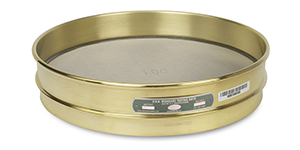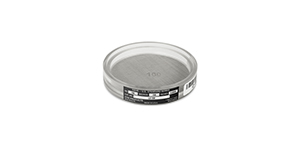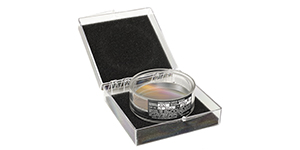Sieve Care and Cleaning

METAL FRAME WIRE CLOTH SIEVES
- Clean sieves from BOTTOM side with a brush. Use extreme care to avoid damage.
- Never use sharp objects to clean your wire cloth sieves.
- Wash in a mild solution of detergent and warm water. For a more thorough cleaning, some ultrasonic* cleaners may be used. (*Caution: Refer to your ultrasonic manufacturer instructions prior to use as some devices may cause screen damage.)
- Mating parts of sieves must be clean at all times to ensure a tight seal during sieving operations.
- CAUTION: Do not expose sieves to temperatures above 261° Fahrenheit as solder will begin to soften.
- Do not use forced air to dry #100 or finer wire cloth mesh sieves. This may result in screen damage.
- Store equipment in a clean, dry environment when not in use.

SONIC SIFTER WIRE CLOTH SIEVES
These directions are for the care and handling of wire cloth sieves only, NOT for electroformed nickel precision sieves.
- Clean sieves from BOTTOM side with a brush. Use extreme care to avoid damage.
- Never use sharp objects to clean your wire cloth sieves.
- Wash in a mild solution of detergent and warm water.
- Mating parts of sieves must be clean at all times to ensure a tight seal during sieving operations.
- CAUTION: Do not expose sieves to temperatures above 120° Fahrenheit.
- Do not use acids or cleaning agents that may damage the acrylic frame.
- Do not use forced air to dry #100 or finer wire cloth mesh sieves. This may result in screen damage.
- Store equipment in a clean, dry environment when not in use.

ELECTROFORMED PRECISION SIEVES
CAUTION – Electroformed Nickel Mesh Sieves are extremely fragile!!!
Failure to abide by these guidelines will void the manufacturer’s warranty.
Precision sieves incorporate an unsupported electroformed nickel mesh, which is very fragile and requires special handling. Long sieve life can be obtained by observing the following guidelines:
- Sample size should be limited for the initial test to a maximum of 2 cc. Experience may necessitate the use of a greater volume, depending on the material. Never exceed a sample of 2 g by mass or 4 cc by volume.
- Never touch the sieve screen with your fingers or objects other than your test samples. Acids in perspiration will permanently stain or damage your screen.
- Use only one precision sieve at a time when performing separations of 30µm or smaller.
- Set sift amplitude at zero to begin the test, and gradually increase until sample material rises to a maximum height of ¼” above the screen surface.
- Clean with a mild solution of detergent and warm water (70°F to 85°F). When washing, hold the sieve in the vertical position and afterward gently flush the sieve with distilled water. Allow to air dry. Do not ultrasonically clean precision sieves.
- Never use a brush or forced air to clean your precision sieves.
- Never expose precision sieves to radiant energy or temperatures above 120°F.
- After each use, always store precision sieves in the original protective box in a clean, dry environment.
